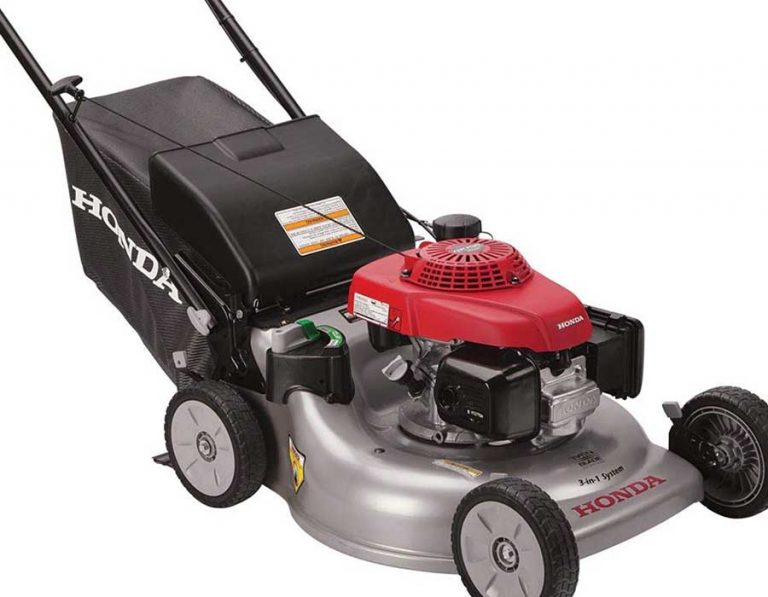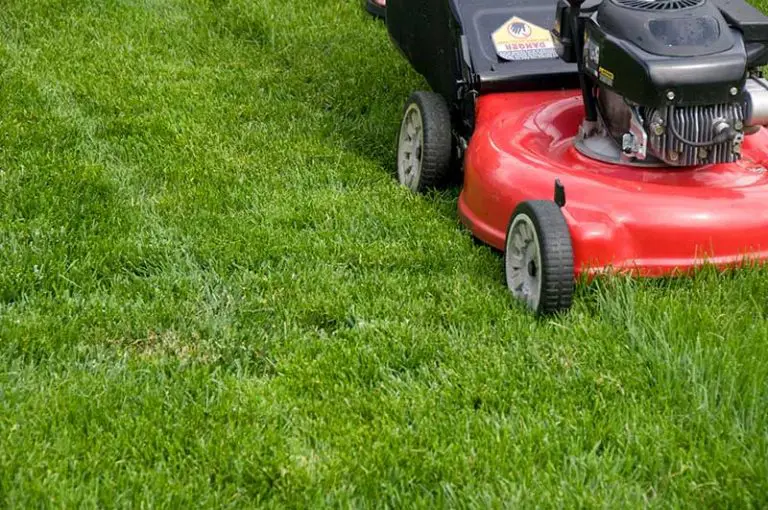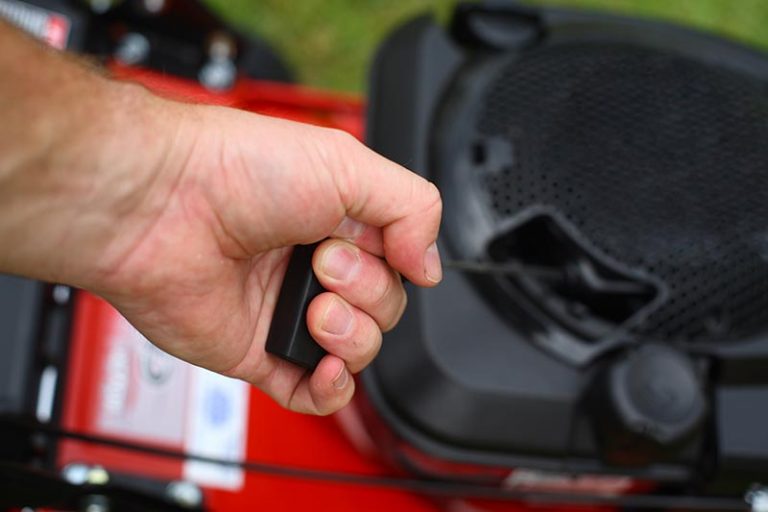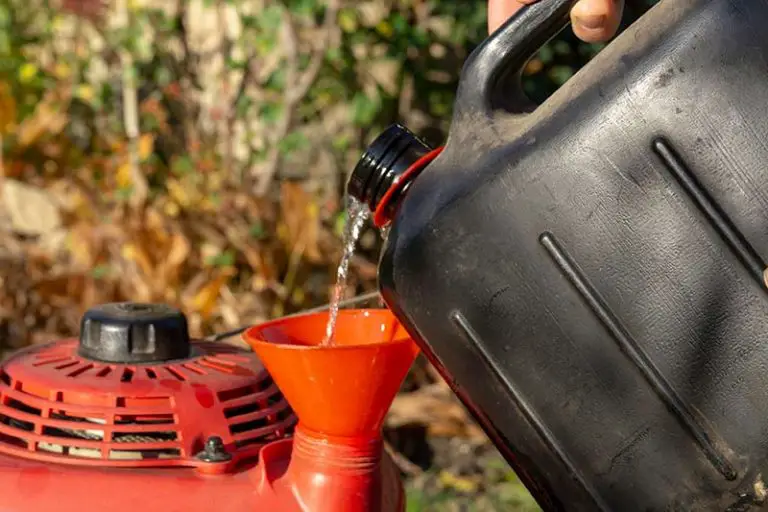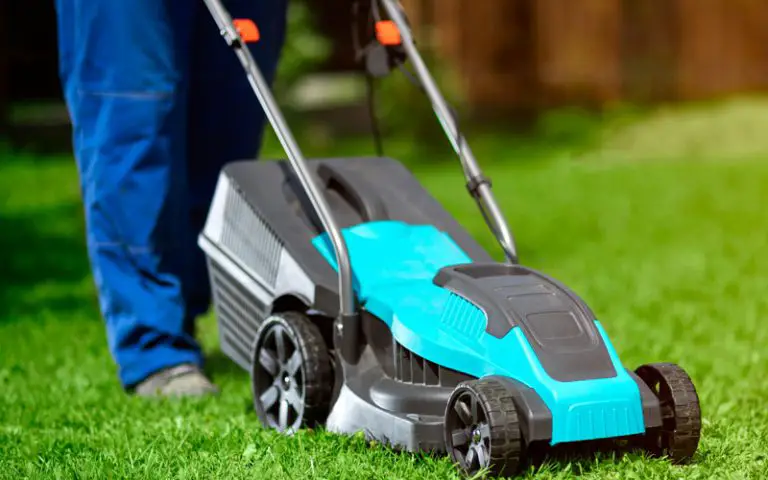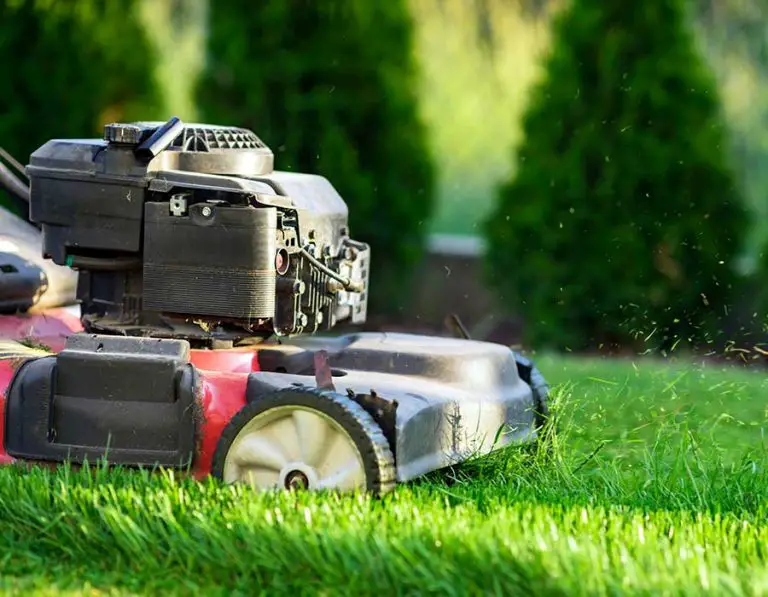How To Fix A Lawn Mower Cord That Won’t Pull
If you’ve ever spent several minutes pulling the cord of your lawnmower over and over before it got started, you can tell how much trouble it is. It’s tedious and time-consuming. Sometimes it happens when you’re out in the sun, and you just want to finish mowing your lawn, a nasty experience. While some might argue that it’s a good shoulder exercise, I’d prefer to have that done in the gym with the proper equipment and not with my lawnmower.
In some cases, the pull cord doesn’t even come out at all; it’s firmly stuck. Occasionally you can pull the pull cord out, but it doesn’t go back in. It’s always recommended you take things to professionals so that you don’t spoil it further due to inexperience, but in this case, there may be one or two things you can do yourself at home.
Several things can cause a pull cord to get stuck. Sometimes grass can get stuck in the recoil system, sometimes the recoil mechanism itself may be the problem, and sometimes the cord itself needs to be changed.
What Causes a Pull Cord to Be Stuck?
A lot of the time, when some amount of movement can happen while pulling the pull cord, the problem is due to debris or grass getting stuck in the recoil system. Because of how low lawnmowers are, it shouldn’t be a surprise when it’s discovered that a lawnmower gets grass stuck in its recoil system. The good news is that this is easily fixable with the right tools and the patience to remove the debris.
Often it’s a problem with the recoil mechanism or somewhere within the starter system. To be sure, you’ll need to dismantle the starter and recoil system gently, piece-by-piece. The best way to do so is to follow the instructions in the User’s manual. If you somehow don’t have one, try following a YouTube video made for the model of your lawnmower. If all these are unavailable, seek professional help unless you feel competent enough to handle it.
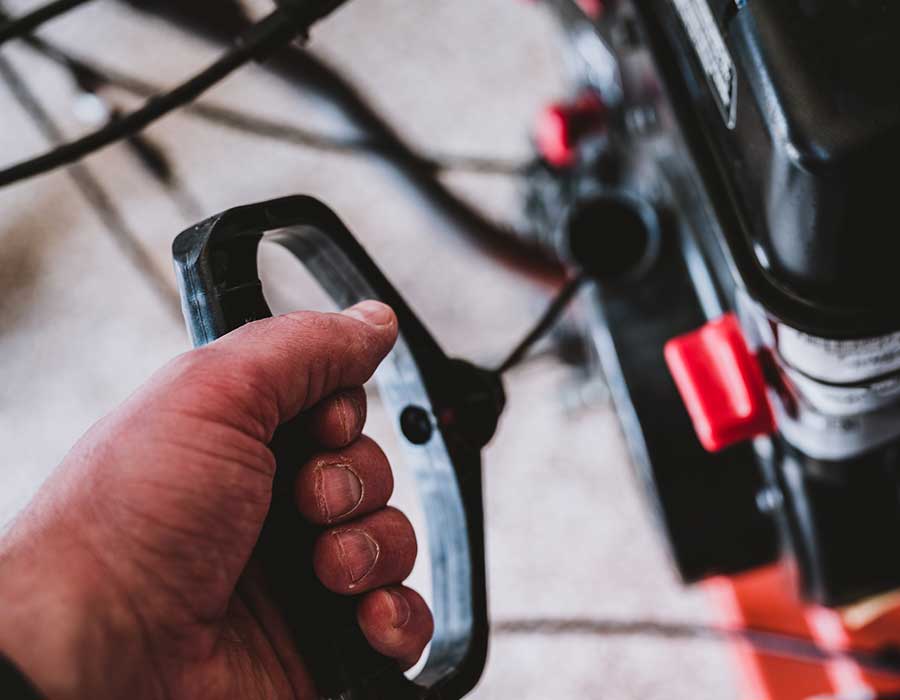
Another problem could be an automatic brake system. Some lawnmowers have automatic brake systems to ensure that it doesn’t move when powered off, kind of like a lever system. Another advantage is that kids don’t go about starting your lawnmower when you don’t want them to do so. Read your owner’s manual to be sure of whether your lawnmower has this feature or not. If it has such a feature, follow the instructions on how to remove it before starting your engine. Most times, it’s a lever you have to press and hold down while starting your engine.
Dealing With the Debris or Grass
If you suspect grass to be the culprit behind your stuck pull cord, the only way to find out and deal with it is to open the motor system first.
Get a screwdriver that fits the screws holding the casing covering the motor house. Unscrew the cover, remove it, and begin removing the grass you can find there. Consider getting a fan or a vacuum cleaner to do the job if you feel pulling each blade of grass or debris out manually would be too difficult. Once the major chunks are out, remove the smaller pieces of debris or Grass by using a screwdriver.
Before closing up, take some time to inspect the cord area, the motor, and their surroundings. You want to clear off as much debris as possible and be sure that it’s just debris or Grass that was hindering your pull cord.
Tangled Rope
Sometimes, the problem with the pull cord may be a tangle along its course. This shouldn’t be a problem to fix once you spot it.
Open up the case covering the motor compartment and inspect the pull cord. Trace the pull cord in its path and take note of how it runs. If a knot or an entanglement is found, remove the pull cord and untangle that spot. Before you do so, you should have another pull cord ready. Sometimes the pull cord can’t be untangled, or it may be cut in the process. Sometimes you’ll realize that the pull cord itself is weak and possibly old.
If you’re able to fix the knot, place the pull cord back in position the way you took it out. If you’re having it replaced, make sure the new pull cord is strong, the right length and width. Replace it the same way you took out the old one.
You’ve just fixed an entanglement, and you’re good to go.
The Recoil System
Sometimes the problem is from the Recoil System or system itself. If you’re unsure at this stage, get professional help. If you’re up to the task, here’s how to detect the problem and deal with possible problems if present:
Get Ready
This means you should get your tools in place, create the time necessary, and put safety measures in place.
Get a list of tools you’ll need on this journey of discovery and fixation. Have them ready and working.
The next thing to do is to clear your schedule. Working and stopping to continue later may work for some people, but it can cause problems for others. There’s a chance you’ll forget where you kept some screws. You risk leaving your engine open to rush and other agents, you risk forgetting you were even working on the lawnmower until you want to use it next (This helps to prevent confusion in the process of fixing the pull cord). The best thing is to create some 3 to 4 hours to fix your pull cord. It shouldn’t take that long, but it might.
Next up, remove the spark plugs, and drain the gasoline if you have to. Removing the spark plugs means that no matter what happens, that engine won’t start. Draining the gasoline means you don’t get to go back to your kitchen smelling like gas. Although it’s proper practice to wash your hands after you are done and use garage clothes, sometimes we forget these things.
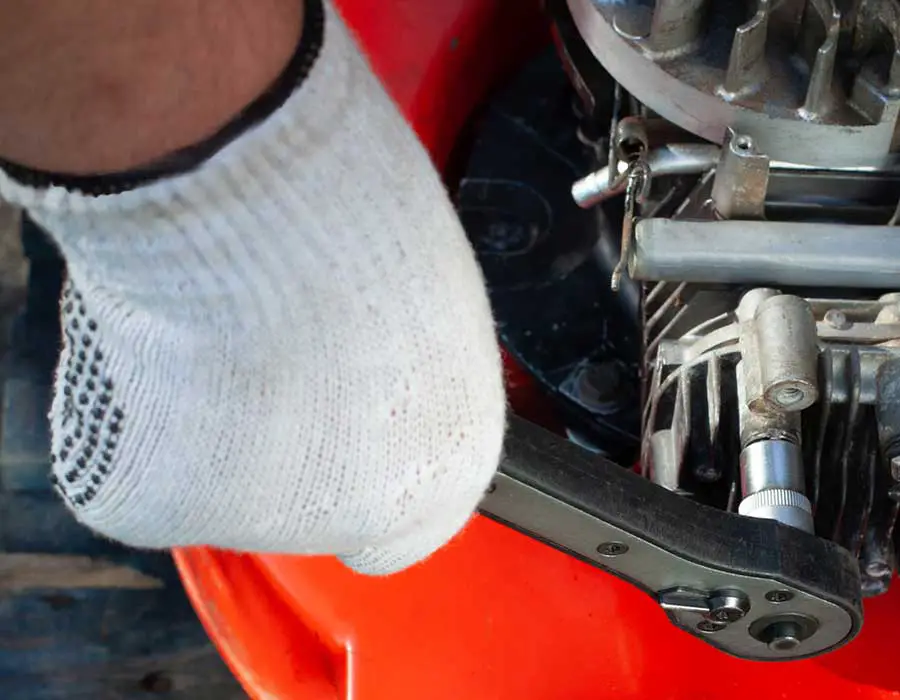
Open Up and Discover
After opening up the cover protecting the motor compartment, follow the owner’s manual’s instructions on how to dismantle the recoil system.
Depending on your lawnmower, to gain access to the rewind housing, you’ll have to first remove the engine parts. Open up the rewind housing and inspect it thoroughly for where the problem may be. Sometimes it’s the cord itself, and sometimes it’s the starter pulley.
Because most of the time, these are the two things that can cause issues, consider buying them before you begin your journey to discovery. It should only cost a couple of bucks. Besides, it means you can find the problem and get it fixed the same day if any of them needs a total replacement.
Within the rewind housing (or recoil mechanism) is a spring. Sometimes the spring needs to be reset or replaced. Consult your user manual on how to properly reset one or have it replaced. Some people believe you should start by inspecting the spring as it might be the only problem.
Ultimately, scrutinize the rewind housing, check the pull cord, and note the errors you find. When you’re done fixing the problem or you’re done replacing the faulty parts, put the rewind housing back in place, fix the engine parts as they were, and try pulling the pull cord. You should test it before closing the motor compartment with the cover. You may need to revisit what you’ve done. Once you don’t feel any resistance, it’s time to put the spark plugs back in and the gasoline.
Testing Your Work
Once you’ve put in adequate gas and you’ve fixed the spark plugs, and you’re positive there’s no problem anymore from the cord or the housing system, start your engine. Remember to remove the automatic brake if there is one.
Your pull cord at this stage should work perfectly without any problem. Now cover up the motor compartment with its cover.
If somehow you notice that the pull cord isn’t stuck, but you have to pull several times before your lawnmower responds, or it doesn’t respond at all, the problem most likely isn’t from the pull cord.
Final Thoughts
Having a pull cord that’s stuck can be a terrible hassle, one that no one should experience but sometimes things can happen beyond our control. Several things can cause your pull cord to be stuck. From grass to the spring within the recoil mechanism, a lot of things could be the problem.
In this article, we’ve highlighted the possible causes of a stuck pull cord, how to identify those problems, and how to tackle them. Make sure to follow the guidelines in this article, this will help you fix your lawnmower cord easily.
Remember, it’s possible the pull cord was never the issue. If you end up fixing what you should, or you’ve checked everything possible, but there’s still no headway with the stuck pull cord, consider seeking professional help.

